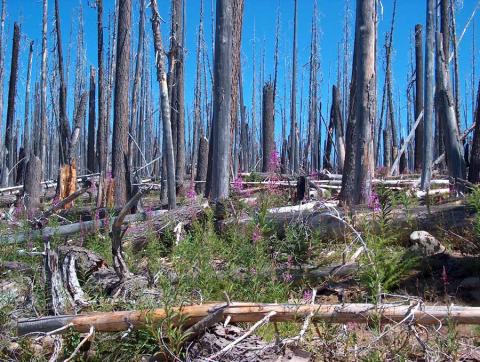Fires release a lot of carbon into the atmosphere, increasing the atmospheric concentration of carbon dioxide, a greenhouse gas. On a short time scale this heats up the climate. Also, most scientists connect burned forests with decreased carbon absorption, further tipping the carbon cycle balance towards warming. But understanding how certain environments respire or store carbon dioxide—crucial for carbon cycle analysis—can be much more complex. This is just what researcher Thomas O’Halloran learned when he looked at the Charlton Fire.
See the full article in Sensing our Planet
Data used in this study include: MODIS Land Product Subsets


